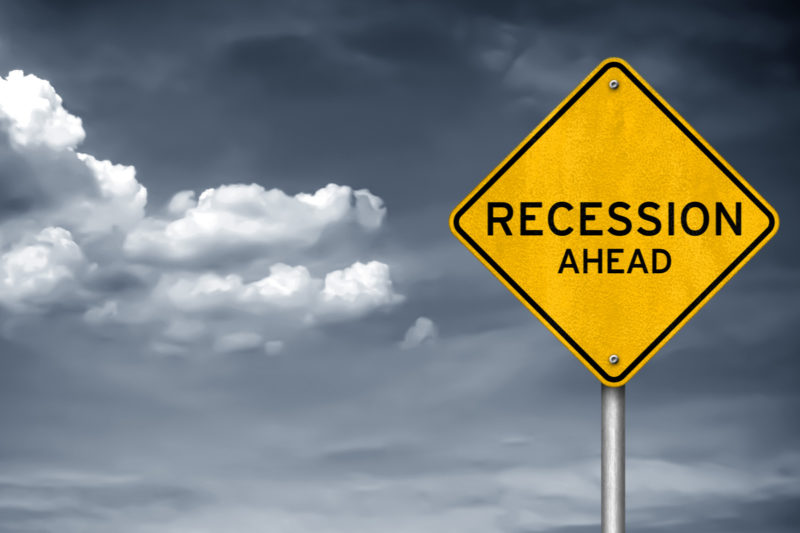How to Prepare Yourself Financially for Recession
Economists seem to love tracking and predicting business cycles. AIER has used leading economic indicators to help predict peaks and troughs in the U.S. economy for more than five decades. Although AIER is not currently calling for a recession, the index of leading indicators has lingered near the neutral level, or just below, for several months.
One of AIER’s leading indicators recently flashed a warning signal. Interest rates on long-term debt fell below interest rates on shorter term debt. This rarely happens – investors typically demand a higher interest rate when they lock up investments for longer periods of time. This phenomenon, known as an inverted yield curve, has preceded each of the last seven recessions.
Economists tend to be in agreement that a recession is at least more likely than it was one year or even six months ago. This raises the important question – how should you prepare yourself financially for a recession?
First, a Caveat
While economic indicators can be fairly reliable at predicting recessions in the not-too-distant future, they are not terribly useful when it comes to predicting the severity, duration, or specific timing of such an event. Leading indicators also tend to predict recessions more often than they actually occur (false positives).
However, carrying an umbrella even when it doesn’t rain is a small price to pay – it’s good to be prepared even if we don’t know exactly when or how bad a recession will be.
In this article, I try to tackle four interrelated facets of your financial life that are important to review at any time, but especially if the threat of an economic downturn increases. These include cash flow management, tackling debt, emergency savings, and your investment structure.
Cash Flow Management
One of the most critical pieces of a sound financial plan is cash flow management, a colorful phrase for budgeting. Monitoring flows into and out of your bank accounts is always important, but even more so if there is any threat that your income could be disrupted.
Workers in cyclical jobs will have the highest likelihood of being affected during an economic downturn. These include construction, real estate, tourism (hotels, restaurants), retail, auto workers – any job that is reliant on other people with disposable income.
These types of workers especially should keep a keen eye on their budgets. Now is the time to consider some belt-tightening or increase income. Maybe it’s worth creating a second income stream through a side hustle or part-time job.
It’s always smart to review your regular expenses and see whether there are easy places to make cuts. For example, cell phone bills from major carriers have become extraordinary (I have heard of families paying upwards of $600 per month for a family plan). The beauty of competition has brought so many options for cell service. We use Consumer Cellular at my house and save about $1,200 per year versus Verizon.
Substitutes to cable abound as well. In addition to streaming services such as Netflix, Amazon Prime, and others, there are low-cost alternatives to cable such as Sling, Hulu, and Youtube TV. By getting rid of cable and switching to Youtube TV and streaming services, I save about $600 per year.
If you’re buying a new car, consider the more fuel efficient option. If you’re renewing your auto insurance, check a few different providers. Knock out the spending on restaurants; they can easily blow the household budget.
These kinds of changes can help reduce your regular expenses meaningfully. Change is difficult when you’ve gotten used to making monthly payments, but there’s little excuse for continuing to pay high fees when there are so many viable alternatives.
There is no magic number for how much you should be saving every month, but obviously the larger the buffer you have between income and expenses, the more you’re able to tolerate a potential downturn in your income.
Manage Debt
Any time is a good time to tackle debt, but right now is a great time to start to get debt under control. Interest rates have fallen to historic lows once again, which also presents an opportunity to re-finance debt.
First, if you have any high interest rate debt such as credits cards, you should do everything in your power to pay them off ASAP. This goes back to point number one about budgeting, but reducing expenses will afford you greater opportunity to pay down credit card debt.
If you have outstanding student loans and car payments, now might be a good time to put a little extra toward those loans in hopes of getting them off your books and reducing expenses in the future.
Finally, if you have a mortgage or other longer-term debt, now could be a really great time to re-finance at a lower rate. Fixed rate mortgages are now available for under four percent. Depending on your current interest rate, re-financing can potentially shorten the life of your mortgage, reduce your monthly payments, or both.
Emergency Savings
Emergency savings are those accounts that you hold in cash, money markets, or short-term debt that are dedicated strictly for emergencies that arise. There are two primary approaches for determining how much to hold in emergency savings.
The first rule of thumb is to keep the equivalent of somewhere between 3 and 12 months expenses in emergency savings. If you’re spending about $5,000 per month, this would suggest an emergency savings bucket between $15,000 and $60,000, a wide range.
A second way to determine how much to hold in emergency savings is to tally up your “current debts.” This is the total of credit card debt and debt payable in the next year. For example, if you have a monthly mortgage payment of $1,600, monthly car payments of $400, and $6,000 in credit card debt, your current debt totals $30,000 ($6,000 credit cards + 12 X $2,000 monthly). The rule of thumb is to hold between one and two times your current debt in emergency savings. In this example, that would be between $30,000 and $60,000.
Both of these general rules of thumb are exactly that, general guidelines. The right amount of emergency savings will also depend on a number of factors: job security, how many people work in your house, health care needs, and how many people are dependent on your income? There is also an important behavioral factor – how much do you need to sleep soundly at night?
At the end of the day, you should make sure you have emergency savings in place before the next recession, whenever it might come and however severe it may be. It is always smart to keep something in emergency savings, but if you think that your income might suffer during an economic downturn, it would be wise to hold a little extra in emergency savings.
Investment Structure
The thing people most often ask about with regard to preparing for a recession is how to structure an investment portfolio.
There are mountains of evidence and academic research that suggests it is nearly impossible to predict with any certainty turning points in the stock market. Most recently, research by Fama and French looked at whether inverted yield curves could be used to sidestep down markets. Looking across the historical data in the U.S. and 11 other markets, they conclude there is “no evidence that inverted yield curves predict stocks will underperform.” Our own research at AIS has come to the same conclusion.
In light of these findings, what should prudent investors do? The answer really depends on individual circumstances. Investors should regularly review their own financial circumstances and decide whether to change risk exposure, regardless of what the economy might do in the near future.
For example, a 62-year old hoping to retire in three years with no pension, but a sizable 401(k) balance in stocks, may look to reduce risk in his portfolio by increasing his allocation to bonds. That would be perfectly rational, and if he’s nervous about the economy, all the more reason to take a second look at his risk exposure.
On the other hand, a 40-year old teacher with 25 years until retirement, who will also receive a pension, might be more reluctant to reduce the risk in his investment portfolio. It likely represents only a small share of her overall retirement wealth, and she has so long until retirement that it wouldn’t likely be prudent to take risk off the table now. That being said, she should ensure that she can tolerate the inevitable volatility of a risky portfolio, and may need to reduce risk to sleep better at night.
The answer lies not in what will happen in the economy, but rather in what is happening with your personal circumstances. It is smart to review your investment structure regularly, but you don’t want to be changing course just because the yield curve inverted or because the leading indicators register a low reading.
Conclusion
The ideas offered in this article about how to prepare for recession are really financial planning guidelines for any economic environment. However, as the likelihood of recession rises, it seems like a good time to review your finances and make sure you’re prepared.
Make sure you track and understand income and expenses, tackle debt problems as soon as you can, establish a solid emergency savings account, and review your asset allocation to make sure it is suited to your current circumstances. These are all things your financial advisor should be doing with you as well.






